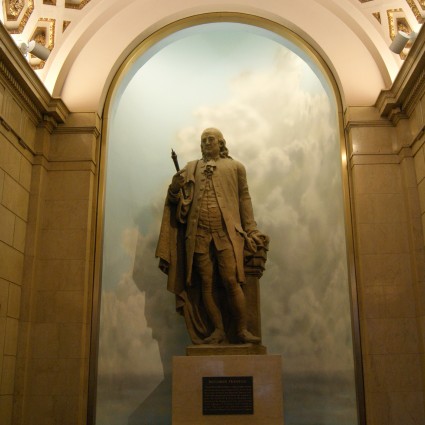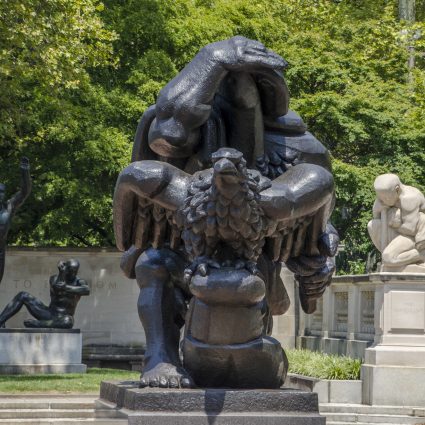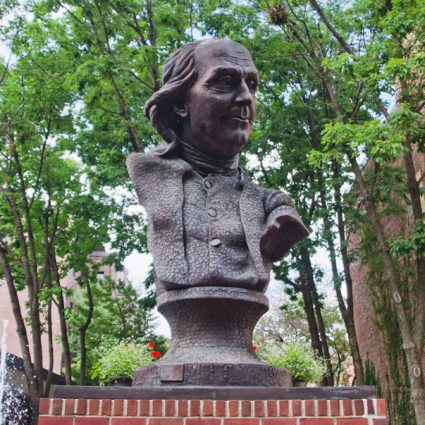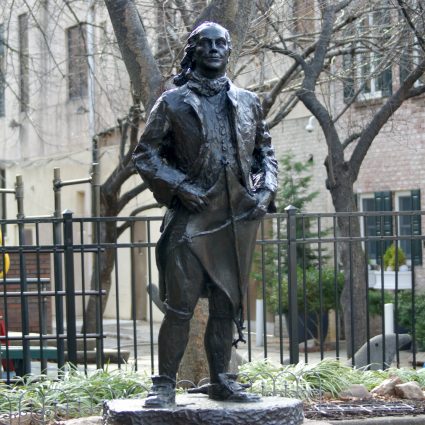At A Glance
Originally proposed at the Fairmount Park Art Association’s first “Sculpture International” exhibition in 1933
Commissioned by the Fairmount Park Art Association (now the Association for Public Art) as a civic gift in celebration of Philadelphia’s tricentennial
The 58-ton sculpture refers to the famous experiment in which Franklin flew a kite in an electrical storm
The 58-ton “Bolt of Lightning” refers to the famous experiment in which Franklin flew a kite in an electrical storm.
At the Fairmount Park Art Association’s (now the Association for Public Art) first Sculpture International exhibition in 1933, Isamu Noguchi exhibited eight sculptures and a number of drawings, including a design for a monument to Benjamin Franklin in Fairmount Park.
The idea lay dormant for nearly half a century, until in 1979 the Philadelphia Museum of Art presented a retrospective exhibition of Noguchi’s work. A reproduction of the 1933 proposal caught the attention of the trustees of the Association, and the project was reborn.
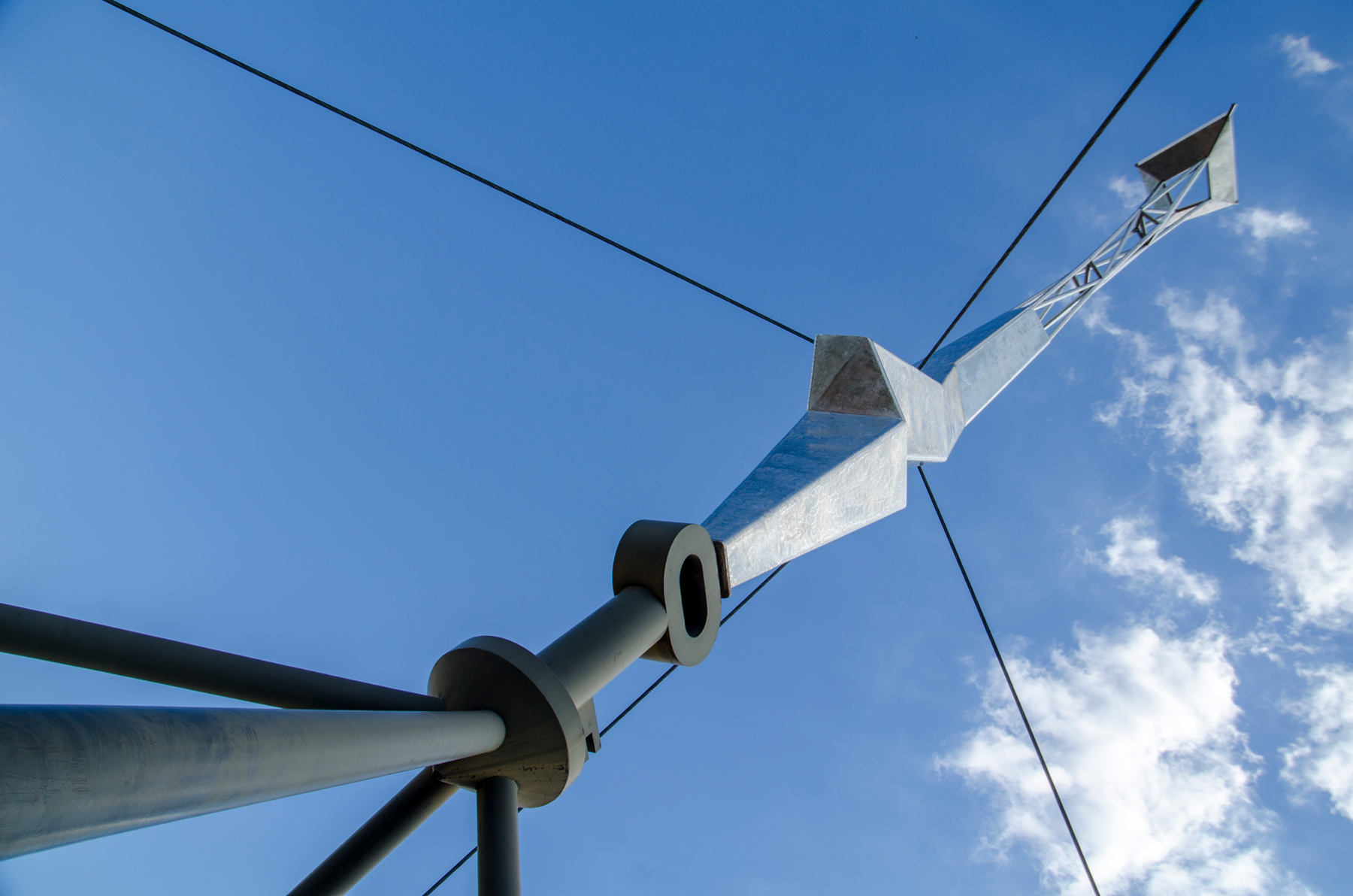
With financial help from the estate of George D. Widener, the Association commissioned the sculpture as a civic gift in celebration of Philadelphia’s tricentennial. Noguchi himself selected the site, Monument Plaza, between the bridge and the square named after Franklin.
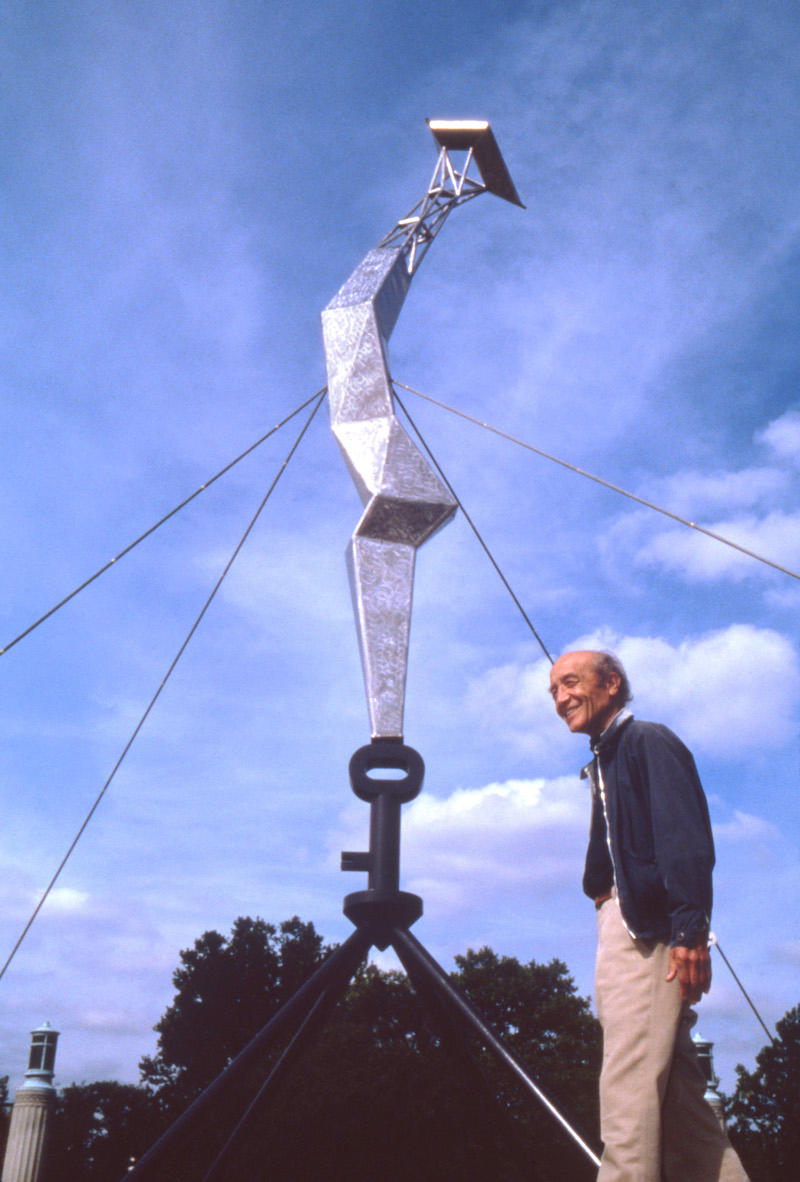
For assistance with technical details, Noguchi consulted his friend Paul Weidlinger of Weidlinger Associates, a New York engineering firm. Though Weidlinger’s usual responsibilities involved bridges and skyscrapers, he had also worked on large-scale sculptures with such artists as Picasso and Dubuffet. Computer analyses were used to determine how the asymmetrical sculpture could withstand the force of gravity.
The 58-ton Bolt of Lightning refers to the famous experiment in which Franklin flew a kite in an electrical storm. A four-legged painted-steel base supports an image of the key that Franklin attached to the kite. On top of the key is the lightning bolt, a 45-foot truss clad with multifaceted stainless steel plates. From the bolt emerges a 23-foot tubular steel structure with a representation of the kite – all balanced by the tension of four steel guy cables. The cables appeared in Noguchi’s 1933 drawings, symbolizing, he said, the eternal and essential contact between air and earth. Jules Fisher and Paul Marantz created the dramatic lighting.
Adapted from Public Art in Philadelphia by Penny Balkin Bach (Temple University Press, Philadelphia, 1992).
RESOURCES
- “Fresh Air” interview: Isamu Noguchi with Terry Gross in 1984
- “Bolt of Lightning” sculpture marks anniversary of Ben Franklin kite experiment (Billy Penn)
- How to Request Images
- The Association for Public Art’s Digital Archive
This artwork is part of the Around Old City tour
